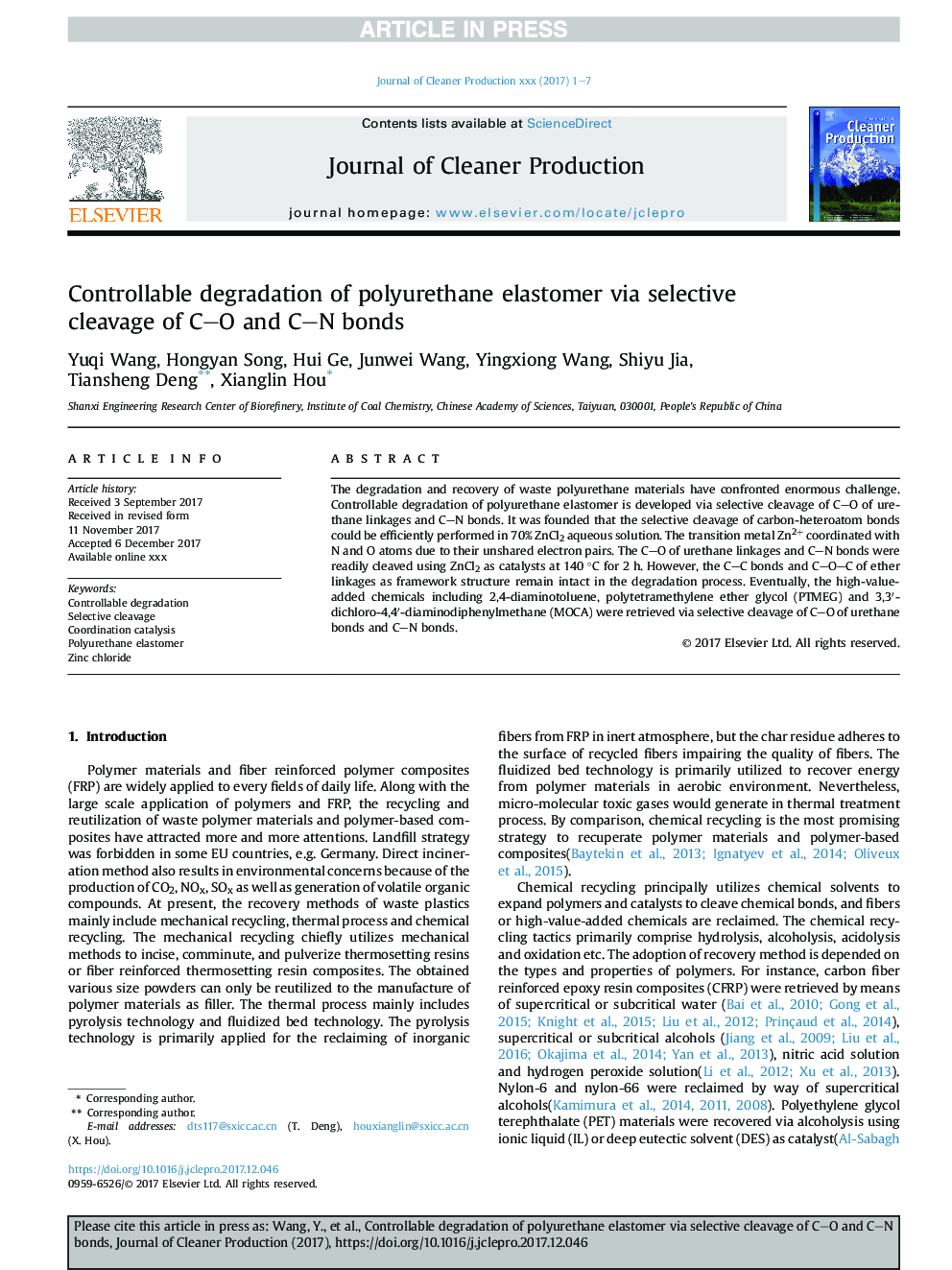| Article ID | Journal | Published Year | Pages | File Type |
|---|---|---|---|---|
| 8099329 | Journal of Cleaner Production | 2018 | 7 Pages |
Abstract
The degradation and recovery of waste polyurethane materials have confronted enormous challenge. Controllable degradation of polyurethane elastomer is developed via selective cleavage of CO of urethane linkages and CN bonds. It was founded that the selective cleavage of carbon-heteroatom bonds could be efficiently performed in 70% ZnCl2 aqueous solution. The transition metal Zn2+ coordinated with N and O atoms due to their unshared electron pairs. The CO of urethane linkages and CN bonds were readily cleaved using ZnCl2 as catalysts at 140 °C for 2 h. However, the CC bonds and COC of ether linkages as framework structure remain intact in the degradation process. Eventually, the high-value-added chemicals including 2,4-diaminotoluene, polytetramethylene ether glycol (PTMEG) and 3,3â²-dichloro-4,4â²-diaminodiphenylmethane (MOCA) were retrieved via selective cleavage of CO of urethane bonds and CN bonds.
Related Topics
Physical Sciences and Engineering
Energy
Renewable Energy, Sustainability and the Environment
Authors
Yuqi Wang, Hongyan Song, Hui Ge, Junwei Wang, Yingxiong Wang, Shiyu Jia, Tiansheng Deng, Xianglin Hou,
